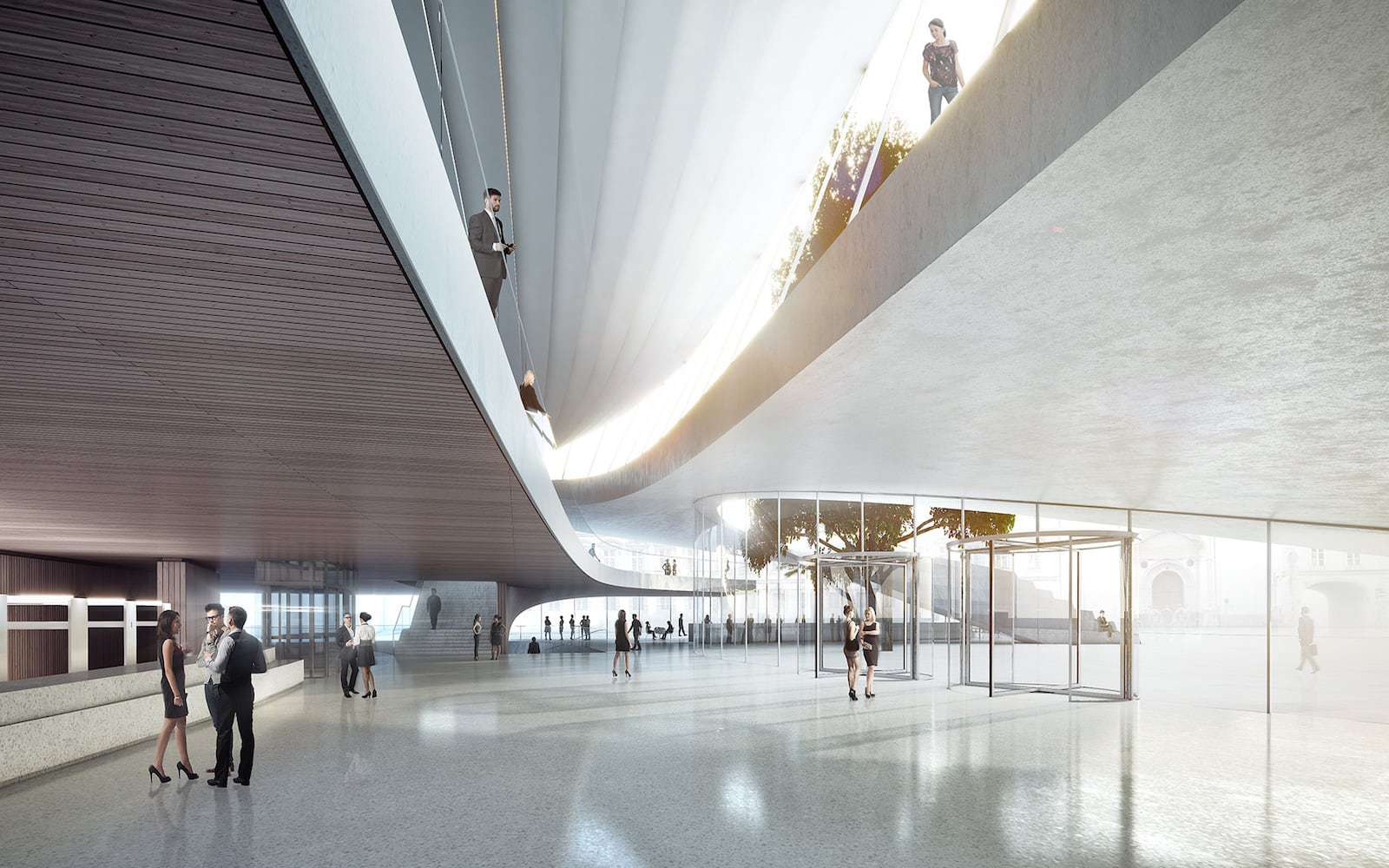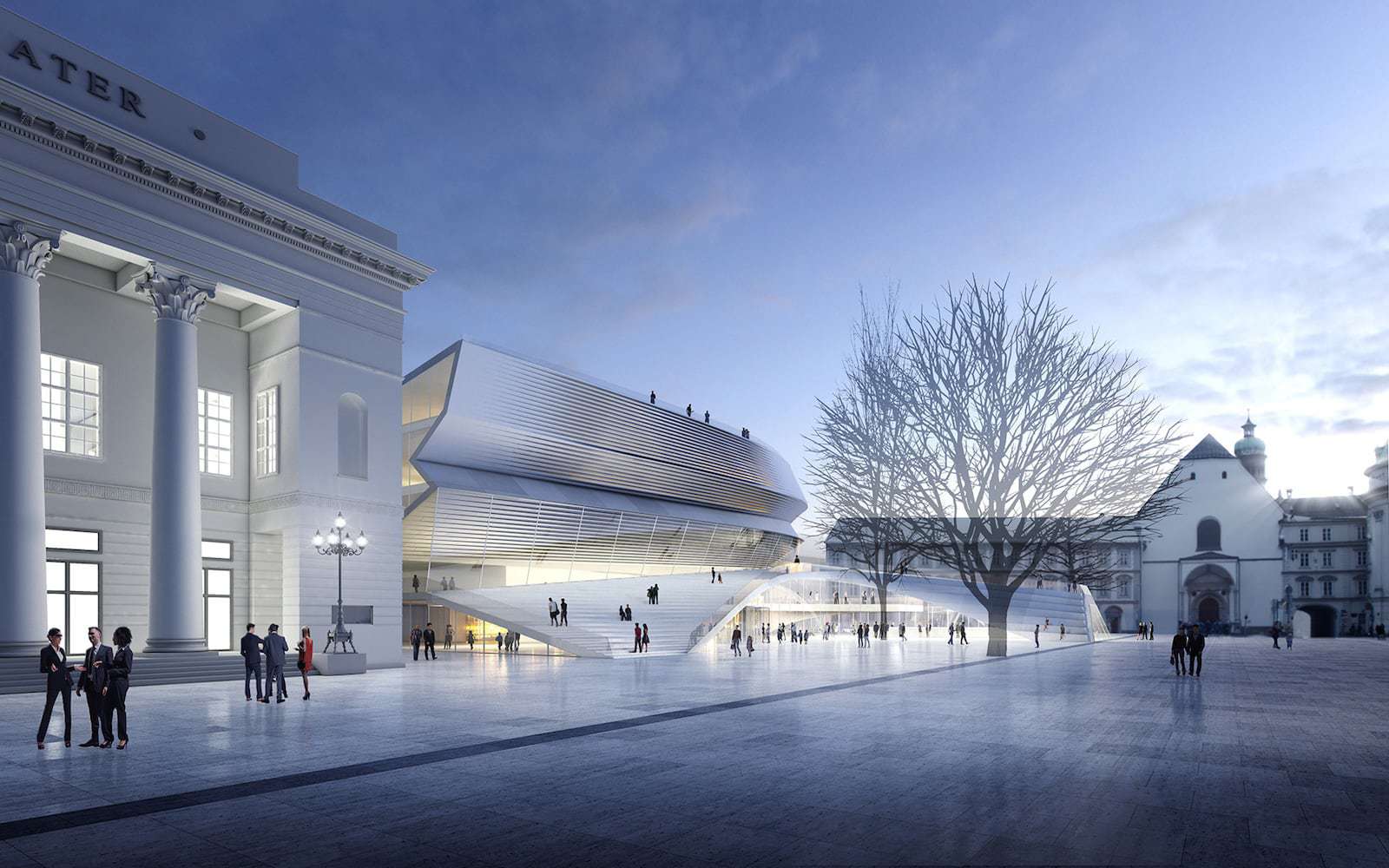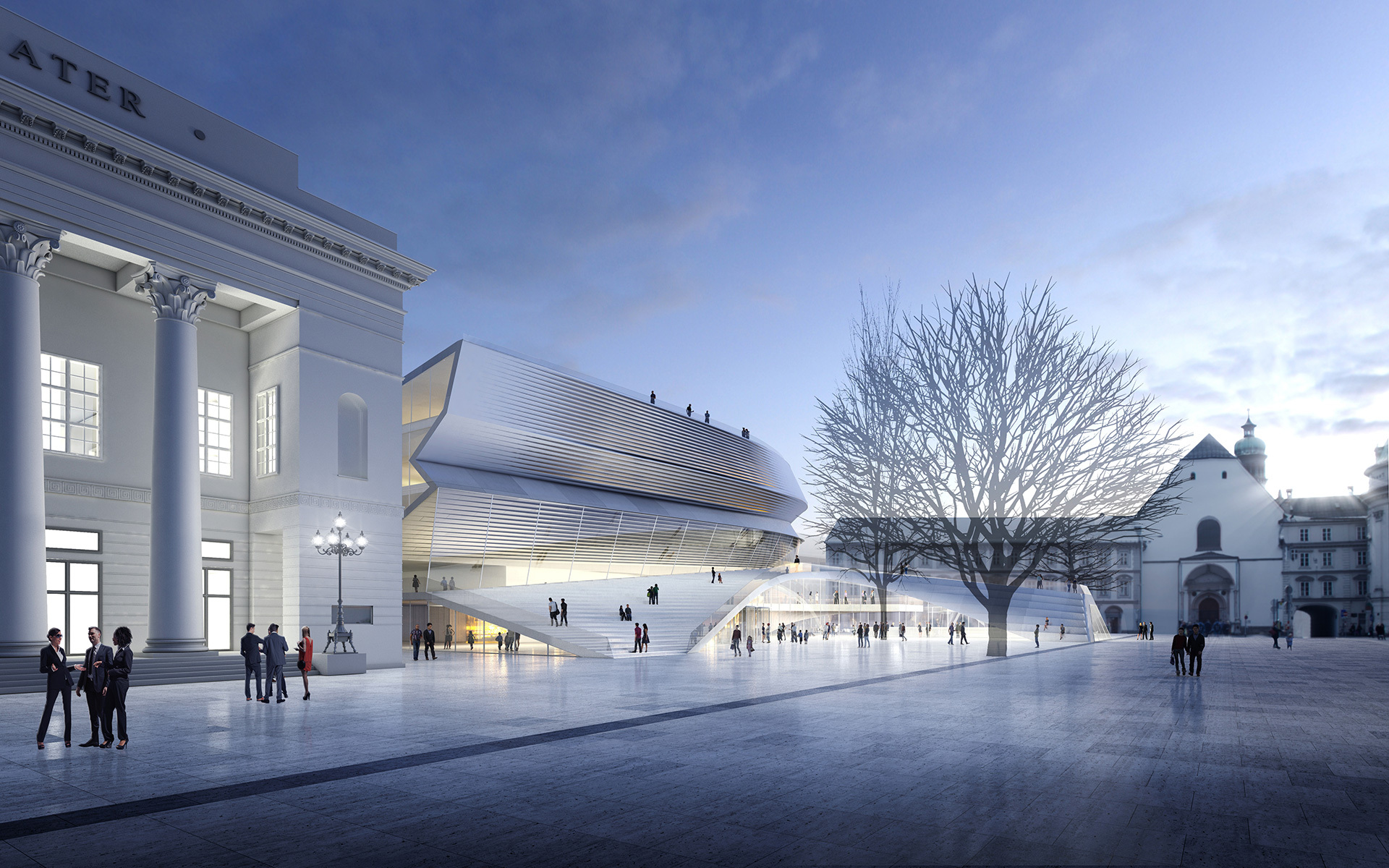Pichler & Traupmann Architects
Mario Gasser


The new Haus der Musik (House of Music) in Innsbruck will re-zone one of historic Innsbruck’s most important focal points and articulate it as a pulsating, living space of culture.
2014
Innsbruck
Competition
Culture
12,681 m²
Year |
Venue |
State |
Category |
Size |
|---|---|---|---|---|
2014 |
Innsbruck |
Competition |
Culture |
12,681 m² |
Year
2014
Venue
Innsbruck
State
Competition
Category
Culture
Size
12,681 m²
The starting point for the reflections on how to clearly articulate this culture district was the historic urban situation around 1800. At that time the Hofburg was connected to the Redoutensäle, which stood on the site of the Haus der Musik, by a building known as the “Hofgangbau”. The effect of this was that the present-day Universitätsstraße was clearly defined as a street and the present day Rennweg, which at the time was correctly still called Renn-Platz, was defined as a Platz or public square. This legible structure was gradually lost from 1844 onwards, but today can be used to legitimise an urban planning measure that enables these two urban spaces to be more keenly and more clearly experienced.
The Museum of Tyrolean Regional Heritage makes the start and, for the first time, obtains an adequate public forecourt that splays outwards in the direction of the Hofburg. The restaurant wing of the new Haus der Musik frames this public space, its position inspired by the former Hofgangbau but restrained by the lines implied by the Hofkirche. The new building creates its own new, spatially defined forecourt, the centre of which is marked by the Leopoldbrunnen (fountain).
The neo-classical facade of the Landestheater already defines in a very lovely way the front area belonging to it, which now becomes part of a series of such spaces.
The new cube on the front area of the Landestheater stands exactly on the line defined by the Hofkirche and through its function contributes to making this a lively district. Finally, the Hofgarten forms the northern termination.

The new Haus der Musik in Innsbruck will introduce an entirely new urban user level – for both tourists and residents alike. An upward sloping plane will create an outdoor public space of a kind that has never existed here before.
This plane develops on the roof of the foyer and can be reached from the two arms of the building that enfold the forecourt. In a sense this creates a public spectator stand for an open air auditorium with the panorama from the Hofburg to the Nordkette mountain range as a backdrop, which also leads past spectacular viewers into the foyer area and up to the entrance to the public library.



As an open building the new Haus der Musik in Innsbruck can accompany the flow of passers-by from Universitätstraße to Rennweg into and through the building.
The foyer zone is situated in front of the building in such a way that, on the one hand, it offers a short cut between the points Landestheater and the end of Angerzellgasse, and on the other can incorporate an attractive relationship to outdoor space in the direction of the Hofburg.
Concert and theatre visitors reach the auditoria via curved, spatially complex staircases, which lead down to the Kammerspiele and the Black Box and up to the large and small concert halls. With their different sizes, heights and functional relationships, these four halls are woven into a spatial construct, in a certain sense interlocked, to create a functionally highly compact nucleus of music and drama which, in the interior, offers maximum freedom to shape the acoustics and externally the maximum amount of freedom to develop a spatially exciting circulation zone around it.


Pichler & Traupmann Architects
Mario Gasser
Philipp Weiß
IIG - Innsbrucker Immobilien GmbH & Co KG, Innsbruck
Bollinger Grohmann Schneider ZT GmbH, Vienna
Nobert Rabl ZT GmbH, Graz
DIEHAUSTECHNIKER Technisches Büro, Jennersdorf
Müller BBM GmbH, Planegg
dnd landschaftsplanung ZT KG
Start of planning: 2014
Usable floor area: 8.454 m²
Gross floor area: 12.681 m²
Location: Innsbruck, Tyrol, AT
Function: Music and performance center
Scope: EU-wide, open, double stage, anonymous competition
isochrom, Vienna
Harald Schmidt, Vienna
3rd prize